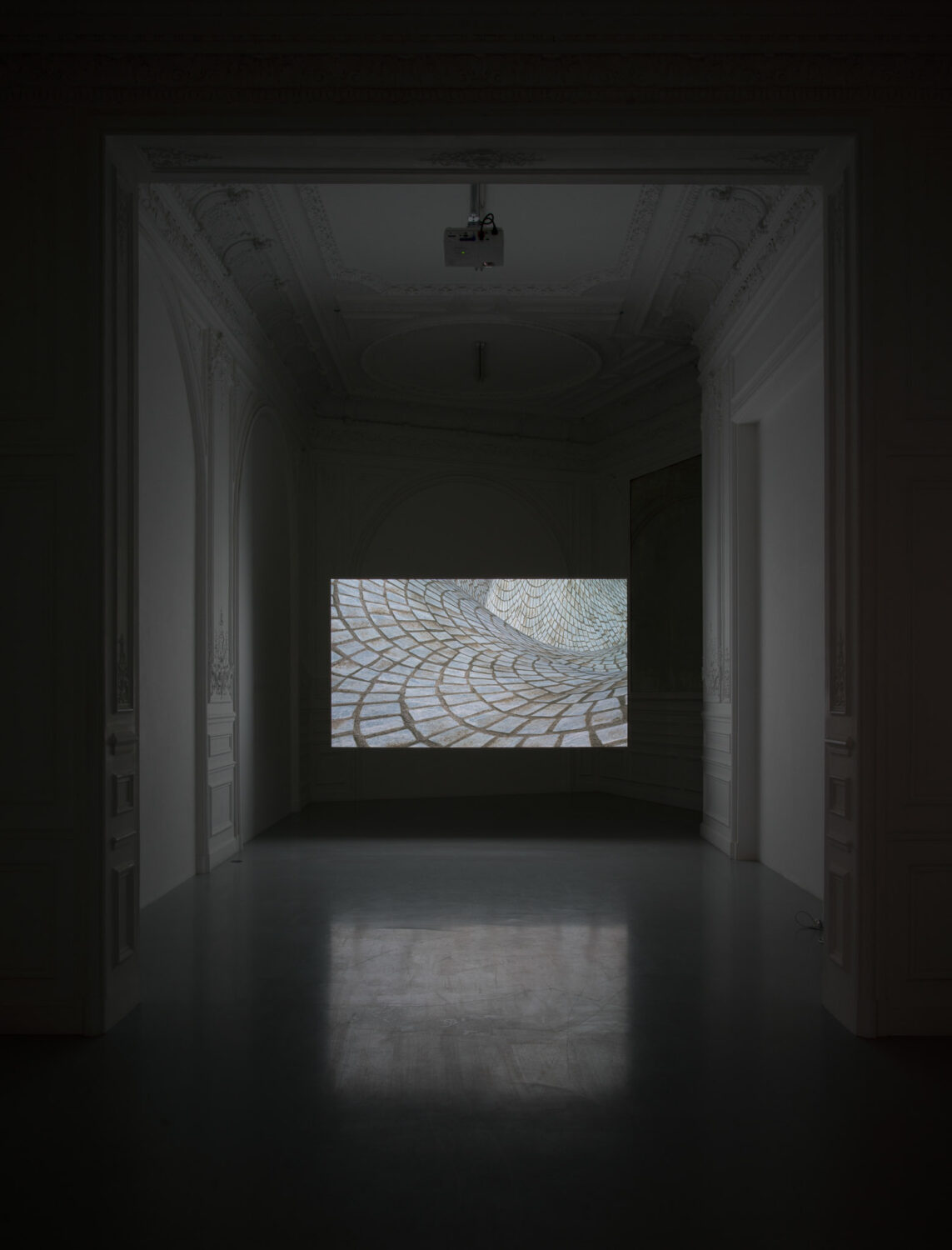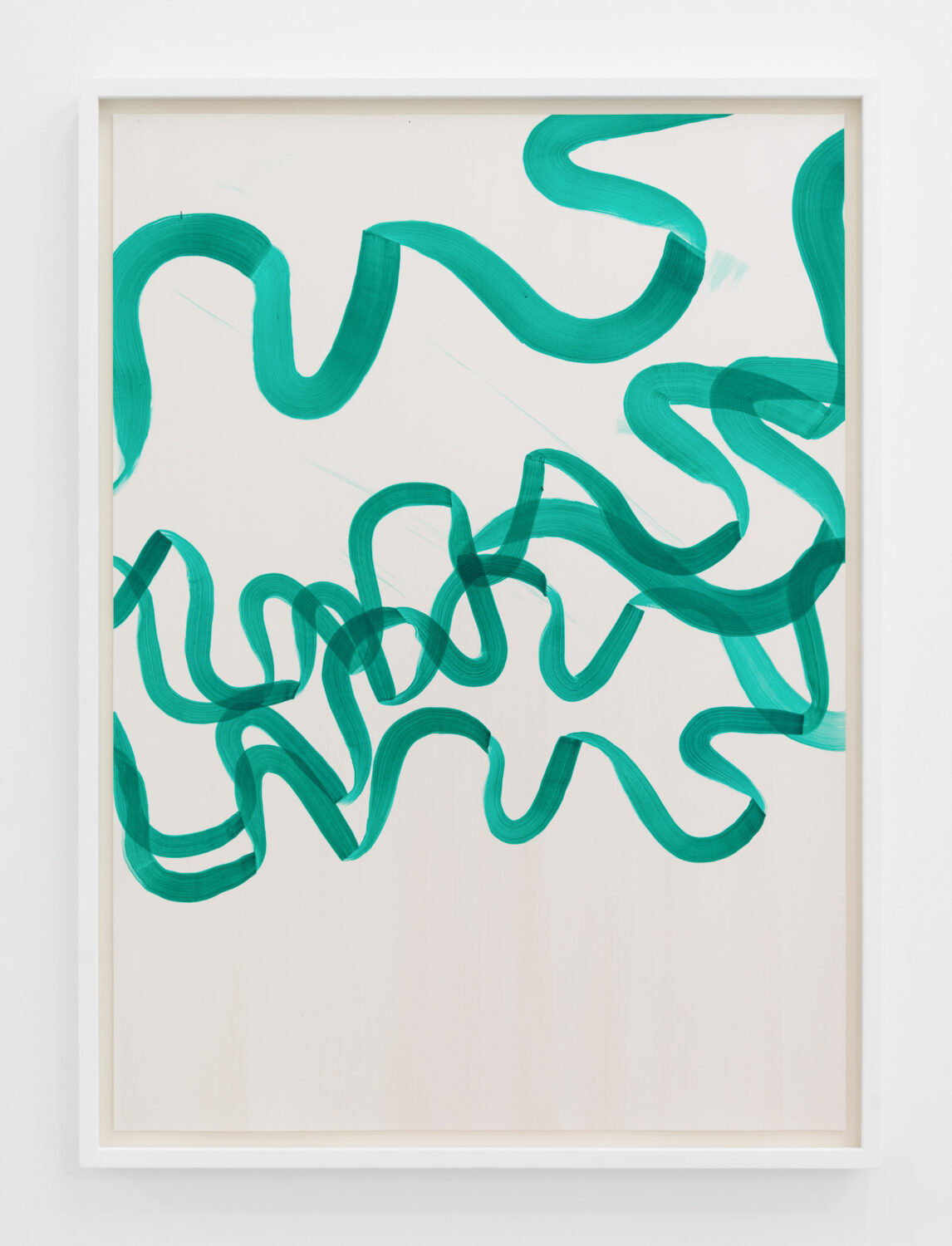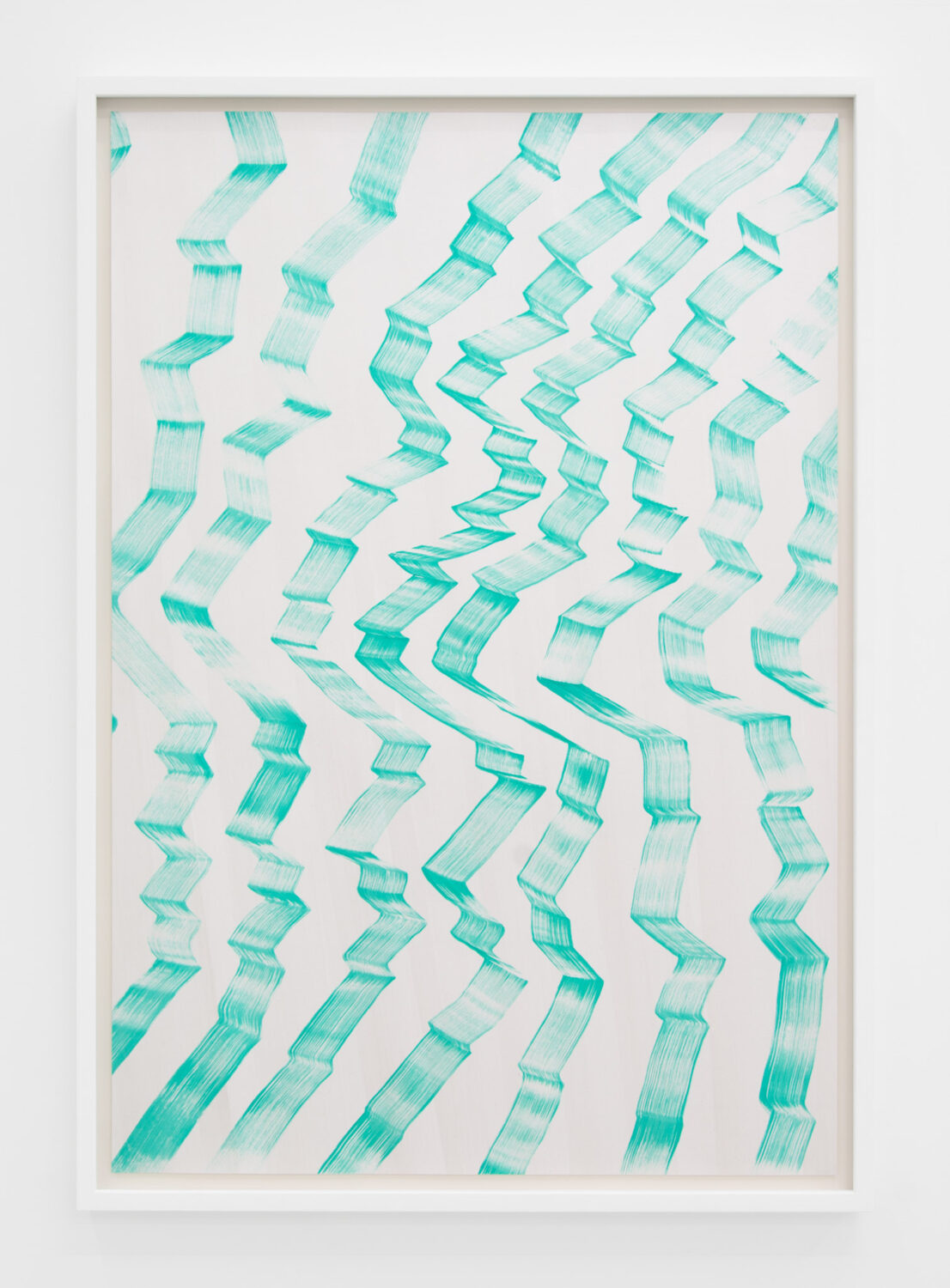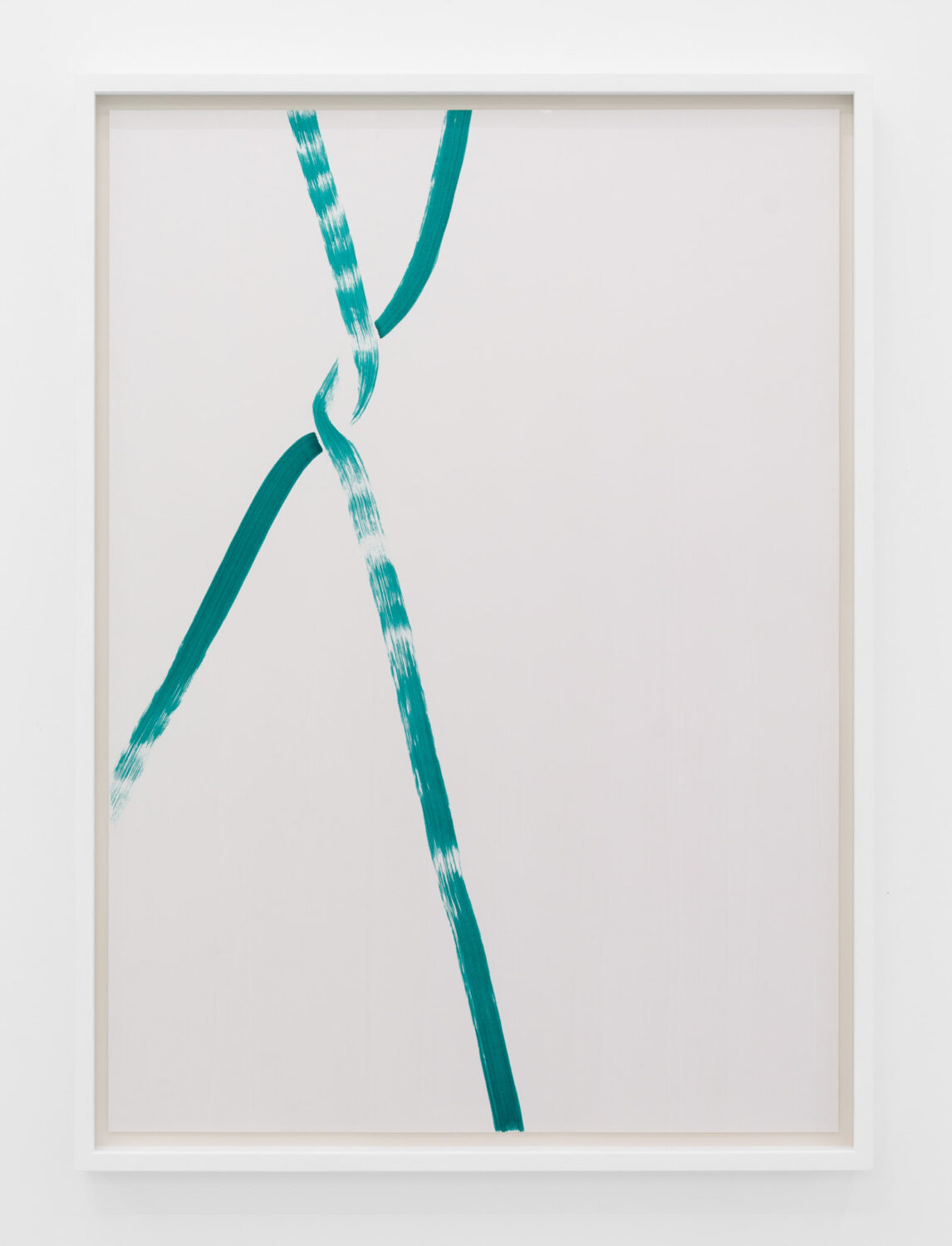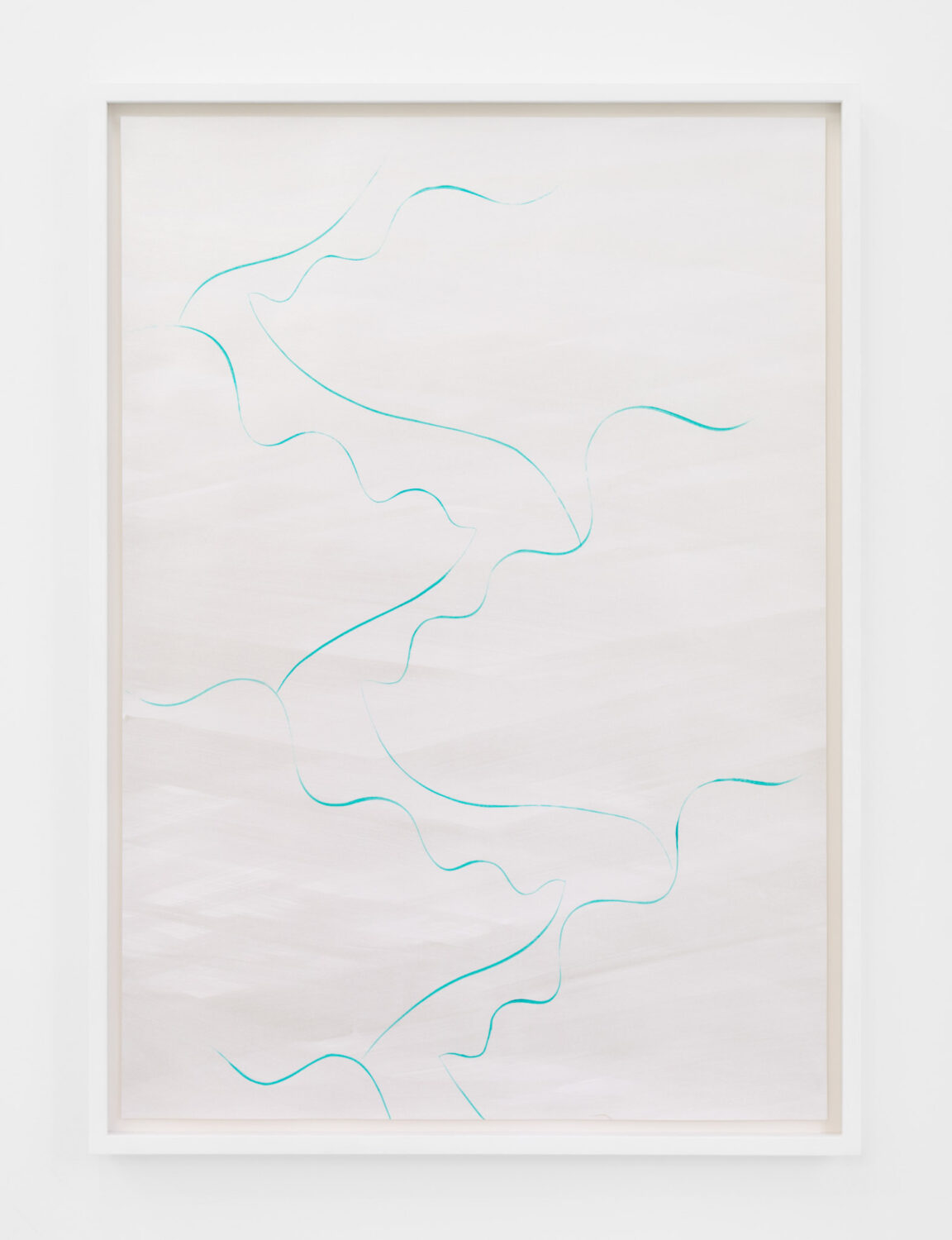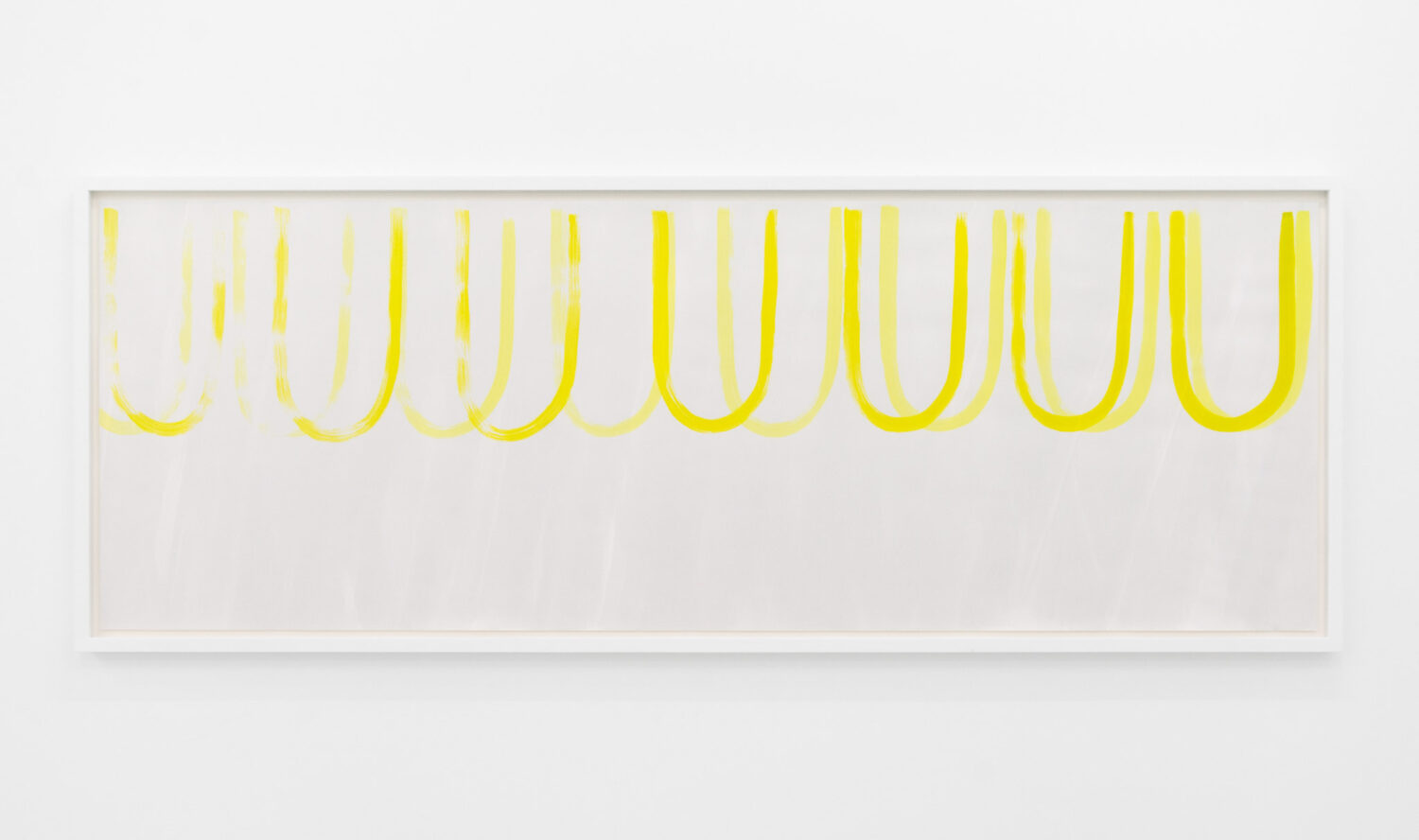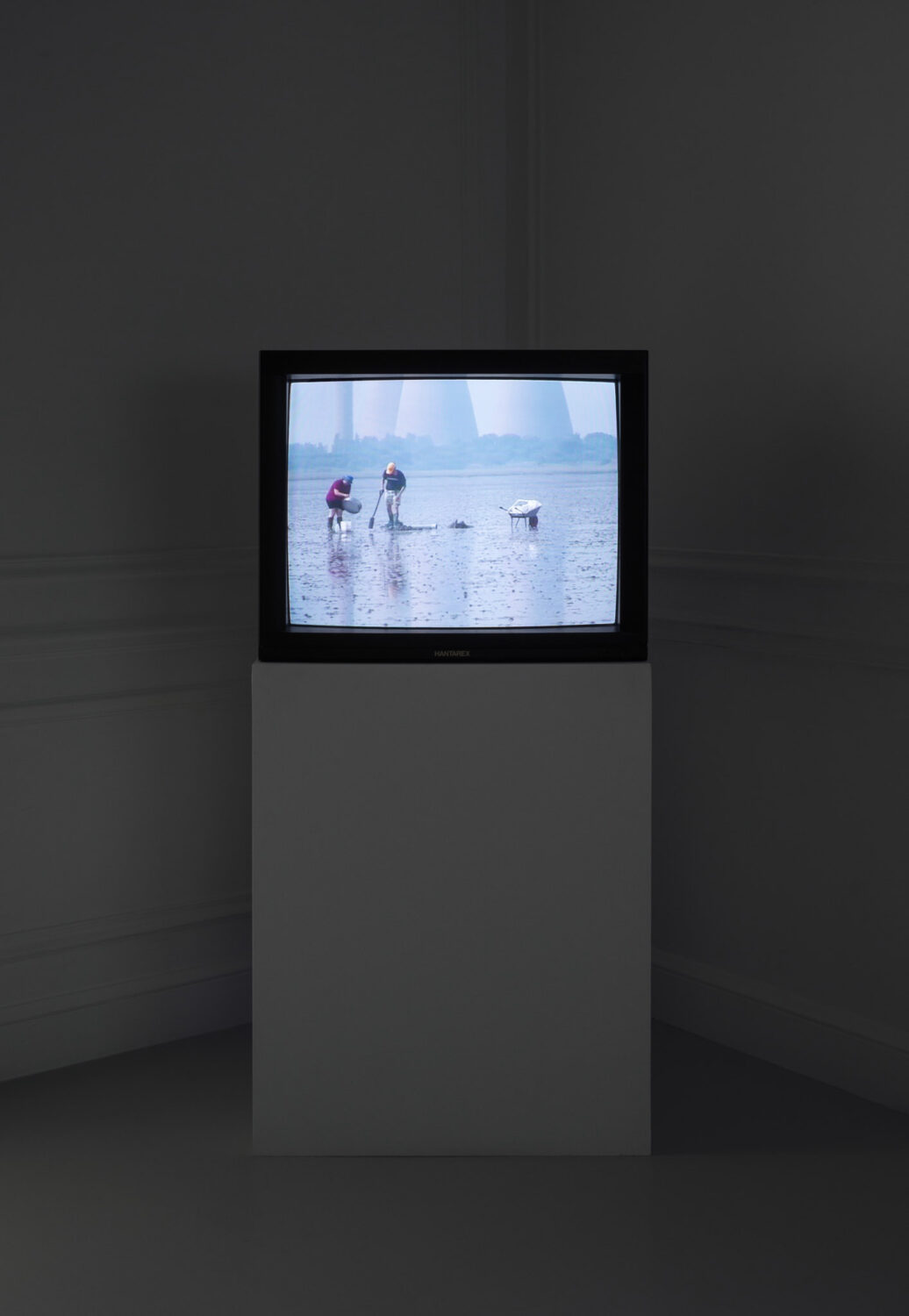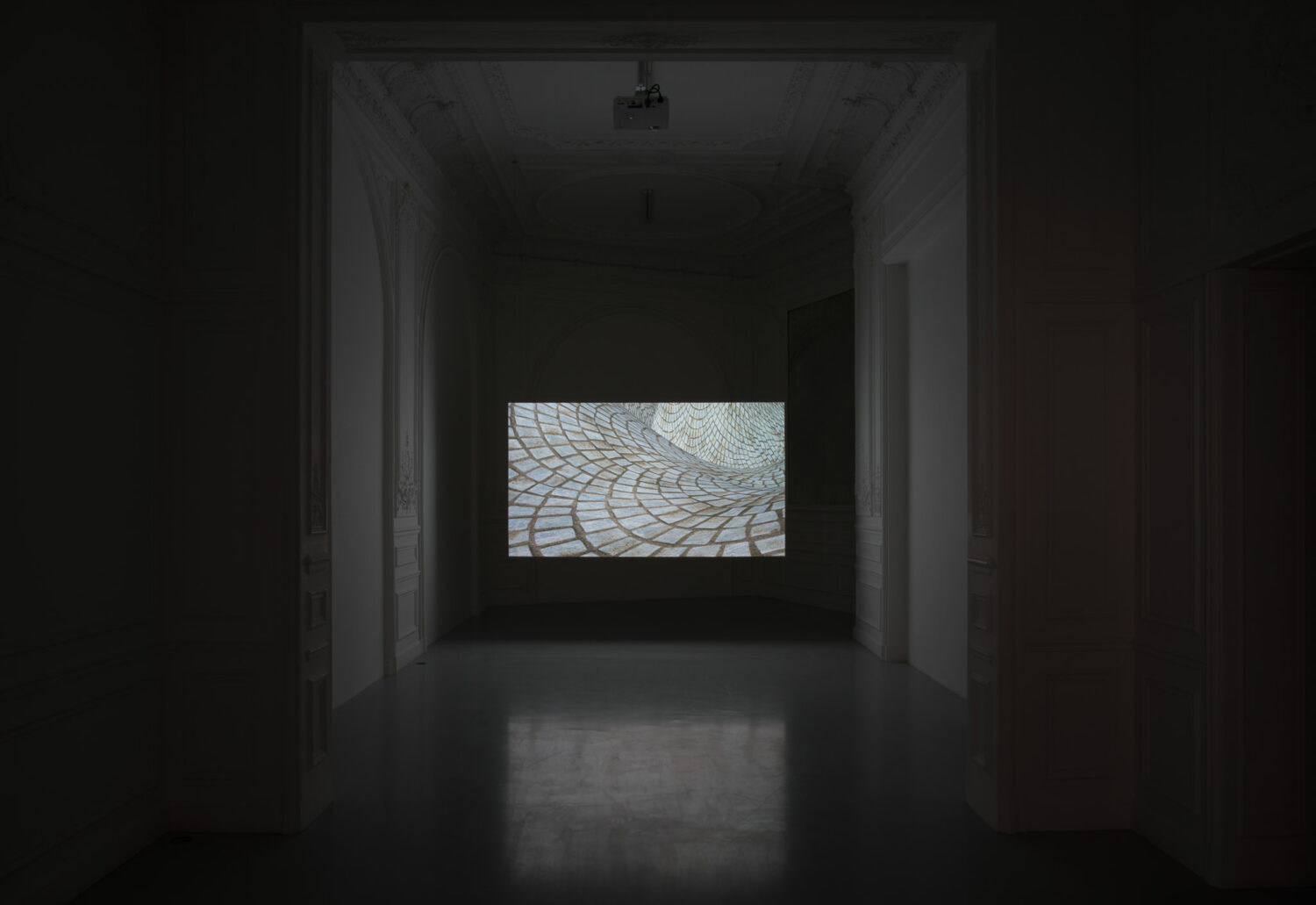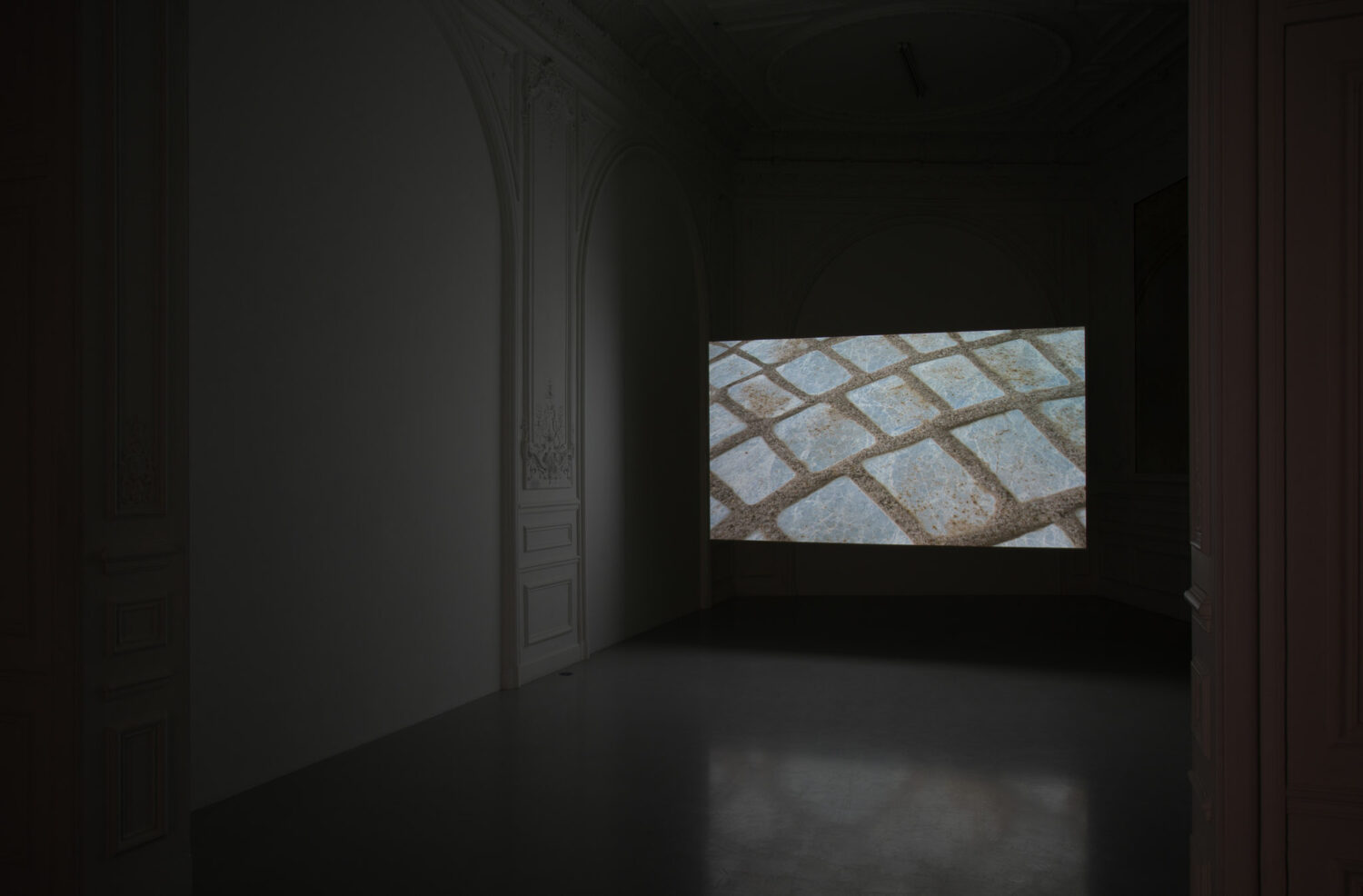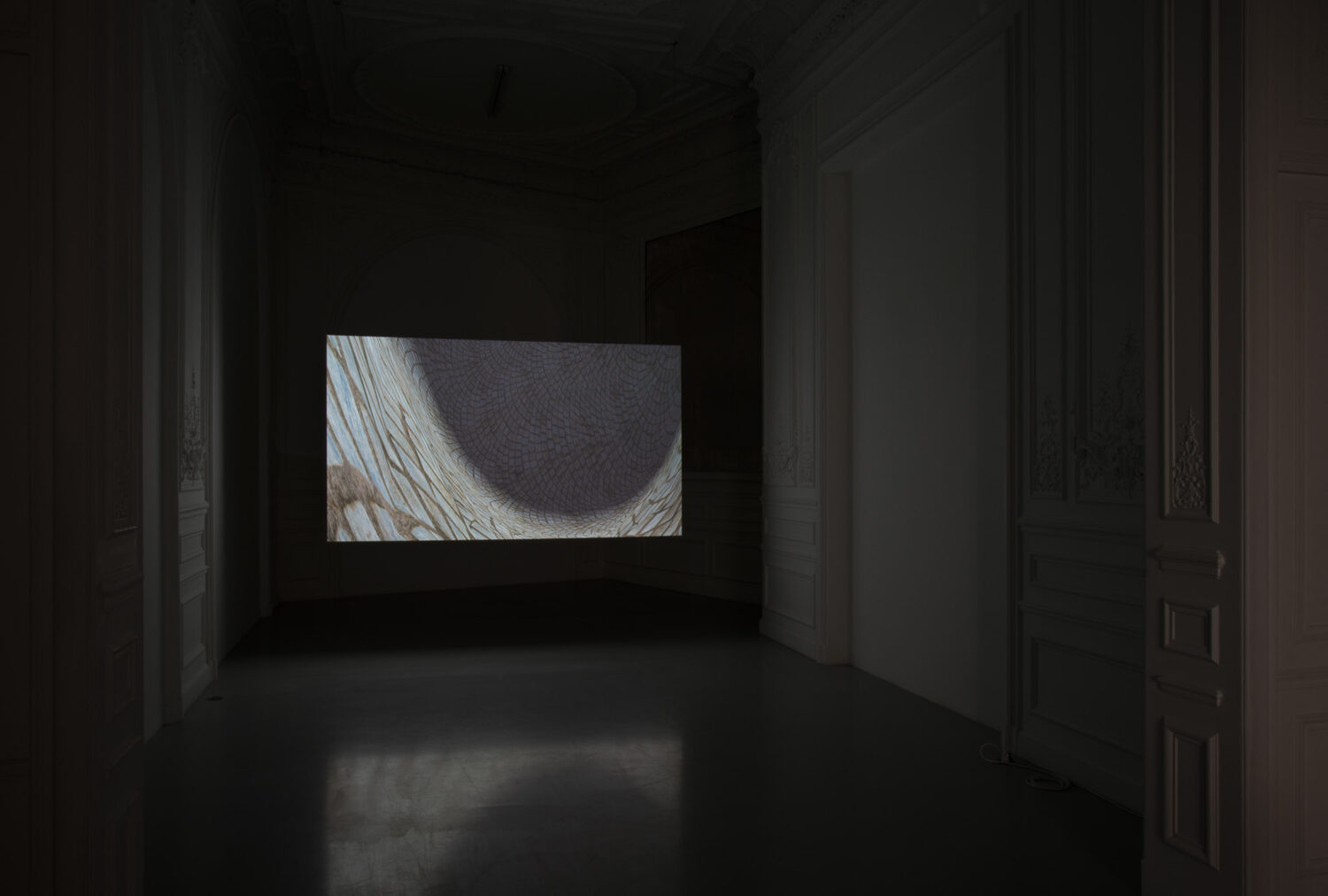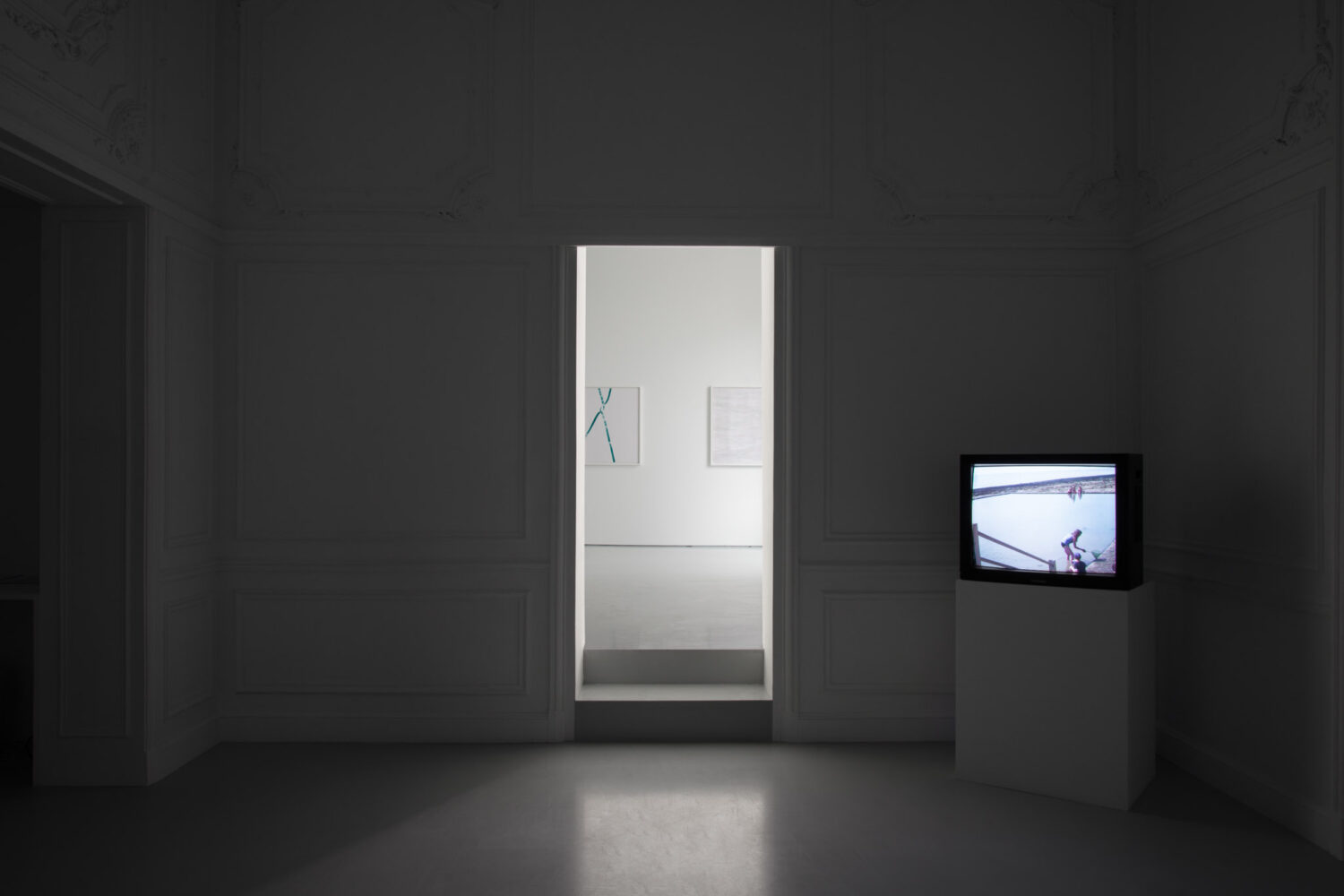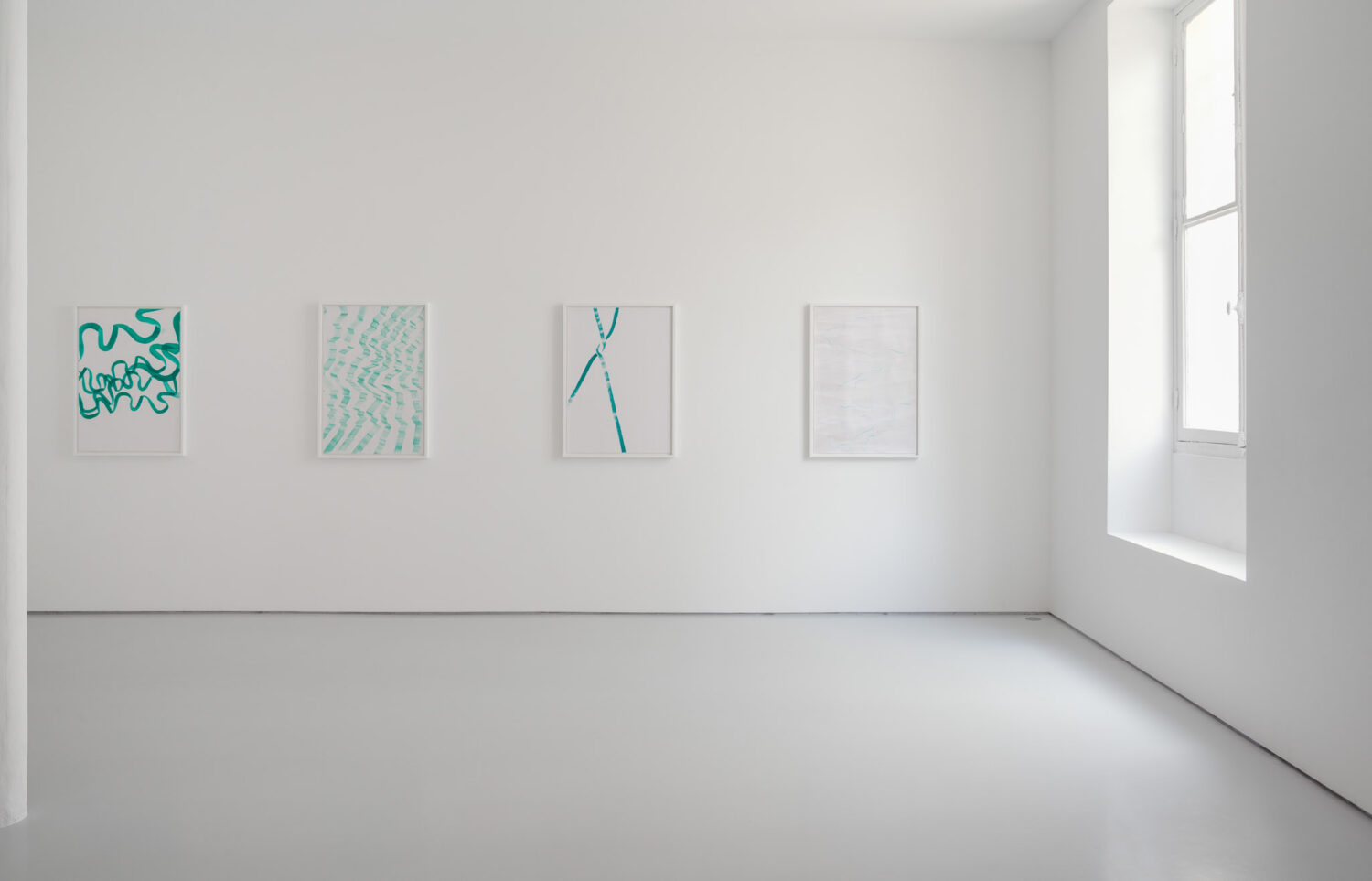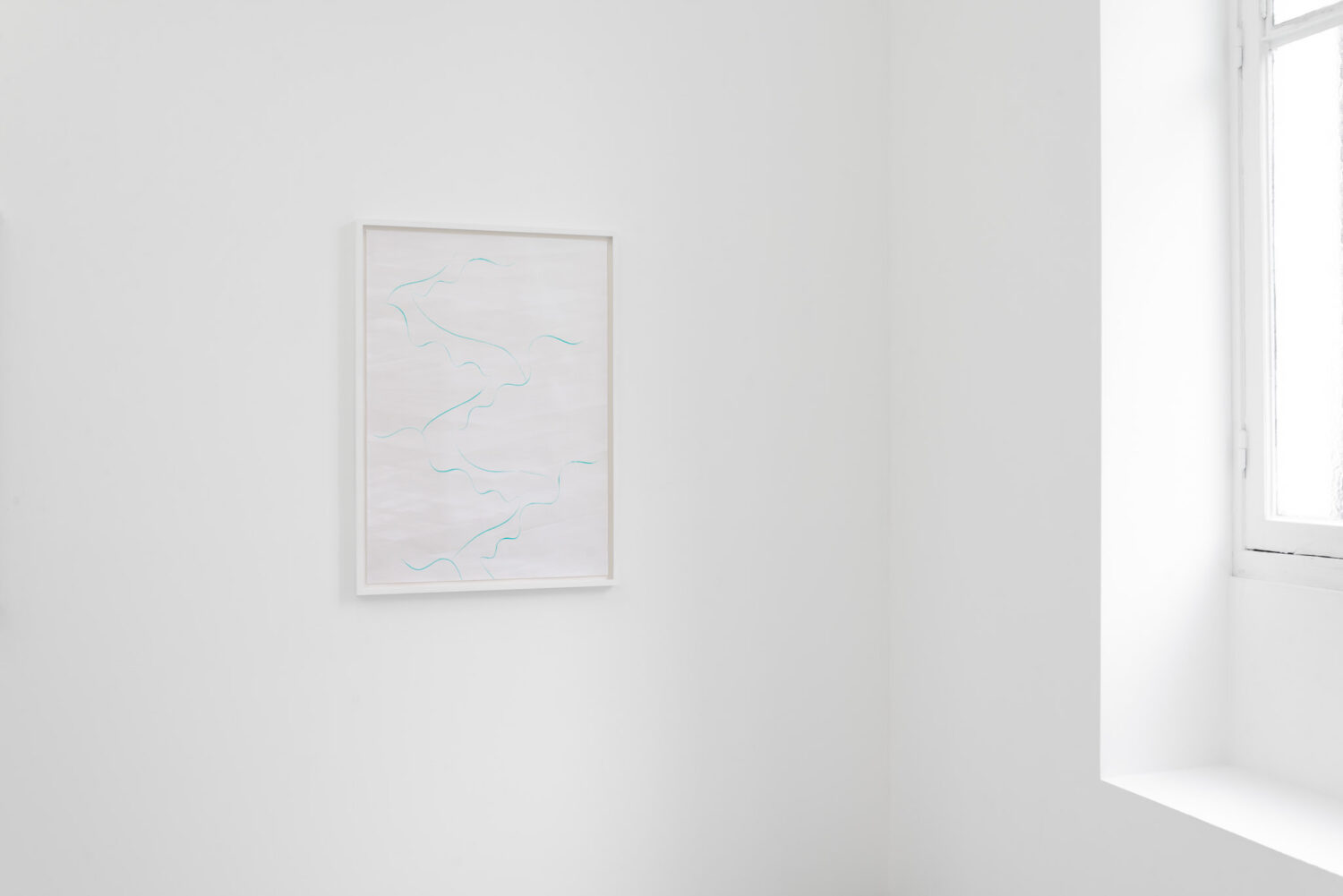

Past
Nina Könnemann
No Next Time
19 May - 19 Jun, 2021. Paris
Exhibition details:
Nina Könnemann
No Next Time
May 19 – Jun 19, 2021
Gallery:
1, rue Fromentin
75009 Paris
It is almost as if one would palpate the pavement via a self-controlled joystick or automated dolly trolley off the tracks with a mounted camera. At times, the camera circles in all directions like the robotic arm Michael Snow once installed in a Quebec mountain landscape (La Région Centrale, 1971) and seemingly stochastically swerves to the left or right as if drunk as a skunk and disoriented. At other times it hesitantly lingers for a second before continuing to wander, scanning the infinite 3D cobblestone map, which was actually made by hand from modelling clay.
Incongruous POV shots were morphed here into anthro- and zoomorphic ways of moving through the landscape that itself–when squinting your eyes a little bit–transmogrifies into scales of a mamba, with neither beginning nor end. This is a space of infinite altered consciousness that constructs itself over a duration–to put it precisely, over 56 minutes, 10 seconds, turning us into an unknown voyager, a passenger that transverses haptic and emotive terrain.
Such a spun, indefinite scenic terrain is symptomatic of a documentary travelogue, which one also believes to prowl visually on the walls of the galleries in two-dimensional abstract and meditative drawings in acrylic on paper. Continuous rhythmic formations in green and yellow, each painted with a different liner brush, move beyond the edges of the picture plane. This type of brush is commonly used to draw long, unbroken lines when decorating two-wheeled cult bikes as a singular vehicle for the voyager to cross a vast landscape.
On a monitor in a side space of the gallery we observe two people with a wheelbarrow digging in a mudflat in front of a power plant through the eye of a rickety hobby-style camcorder while the wind whips and a humming airplane roars overhead. One calls these amateur archaeologists uncovering all sorts of treasures–sometimes just for the sake of killing time–mudlarkers. The camera gaze, the rider, wanders over the landscape, strides through the mud, zooms in and out on people and randomly documents until one appears to be looking into a black void for a long while, as if gazing at accidental footage taken after having forgotten to switch off the camera after covering its lens. However, in reality, sequences of black were added to the unedited material, here simulating exactly when and how long the camera had been switched off on the day of filming to reconstruct the actual elapsed filming time in retrospect. At some point seemingly unselfaware holidaymakers use a scoop net or play ball in the water, while the voyager is always close behind them, standing in the water. Then the camera bounces away and hastily switches off again–as if getting spotted. Those supposedly indiscriminate recordings might evoke undercover observations as common in Britain’s Mass Observation Project running from the 1930s to the mid-1960s. As an enigmatic avant-garde sociology “fashioned when the everyday [was] taken as the central problematic,” it tried hard to occasionally get a sense of the crowd. However, “Mass Observation” as a name pointed out the project’s fallacies from the beginning by prompting the question: Does mass observation mean observation of the mass or observation by the mass?
Eventually the “Kino-eye” presented in this exhibition might even go beyond this anthropological endeavor to capture what lies below the infra-ordinary, the threshold of ordinary perception. Rather, with its intentional aimlessness, the camera unsettles its own subjectively constructed worlds by not only showcasing the materiality of its medium, filmic time and space, but moreover sabotaging the split between rider/voyager (invisible, unknown and irresponsible) and those observed–always taking into account the unruly pleasure of being able to set one’s own observational, flaneurist laws and casually look back.
– Elisa R. Linn
* The animation was partly realised in cooperation with filmmaker Tim Carlier
